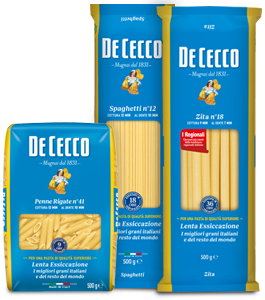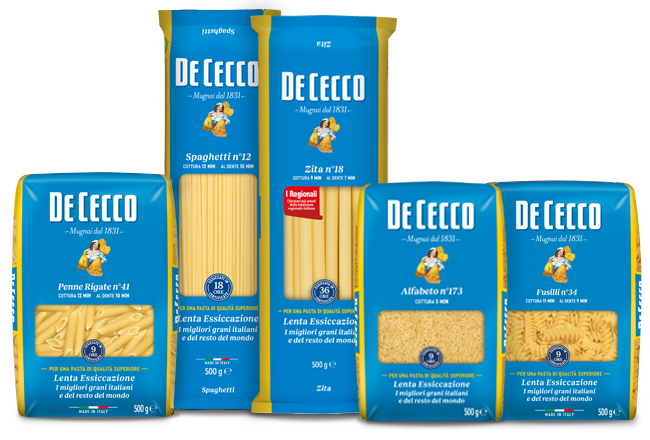Since 1886, we have chosen to slow dry our pasta at low
temperatures to guarantee a premium-quality product

Traditional preparation using a recipe dating back over 130 years and involving:
What is the pasta-drying process?
It is the last stage of the pasta production process, essential in guaranteeing quality produced
throughout the entire chain. This phase can be carried out quickly (between 3 and 6 hours)
at high temperatures (over 75°C) or, as very few do, in a slow and gentle process at low temperatures
For each individual De Cecco pasta shape, the number of hours for slow drying have been certified as:

 Short
Short
pasta Long
Long
pasta Special
Special
pasta
What are the benefits of slow drying at low temperatures?
It is better for retaining the quantity and quality of proteins and amino acids.
It prevents the formation of substances that are not naturally present in the ingredients.
It is better for retaining the aroma of the fresh semolina and the pasta’s nutritional properties.
